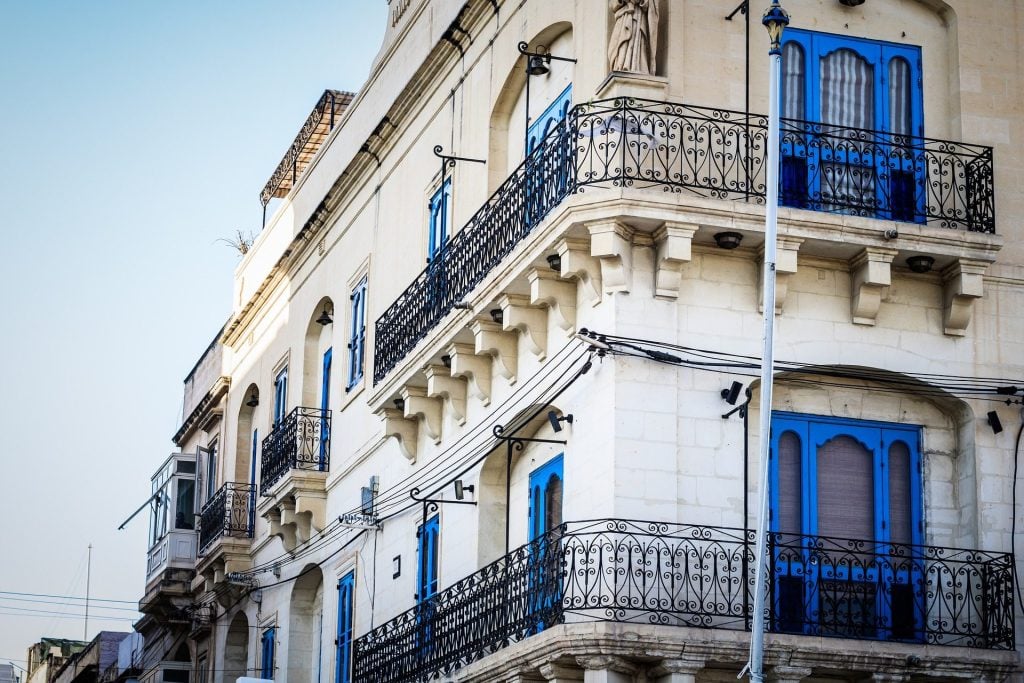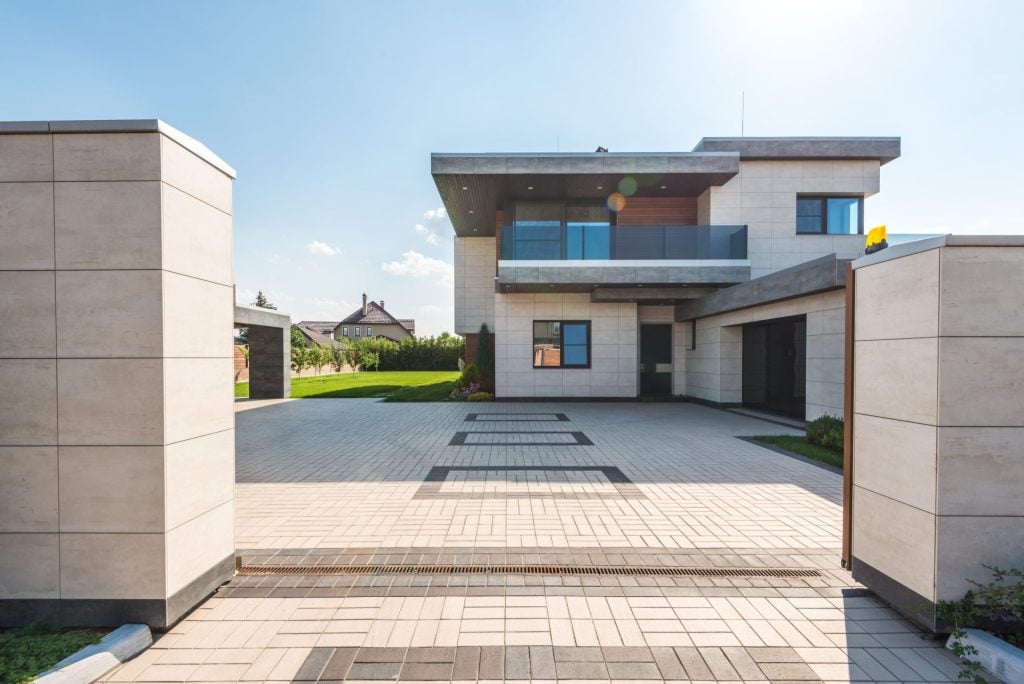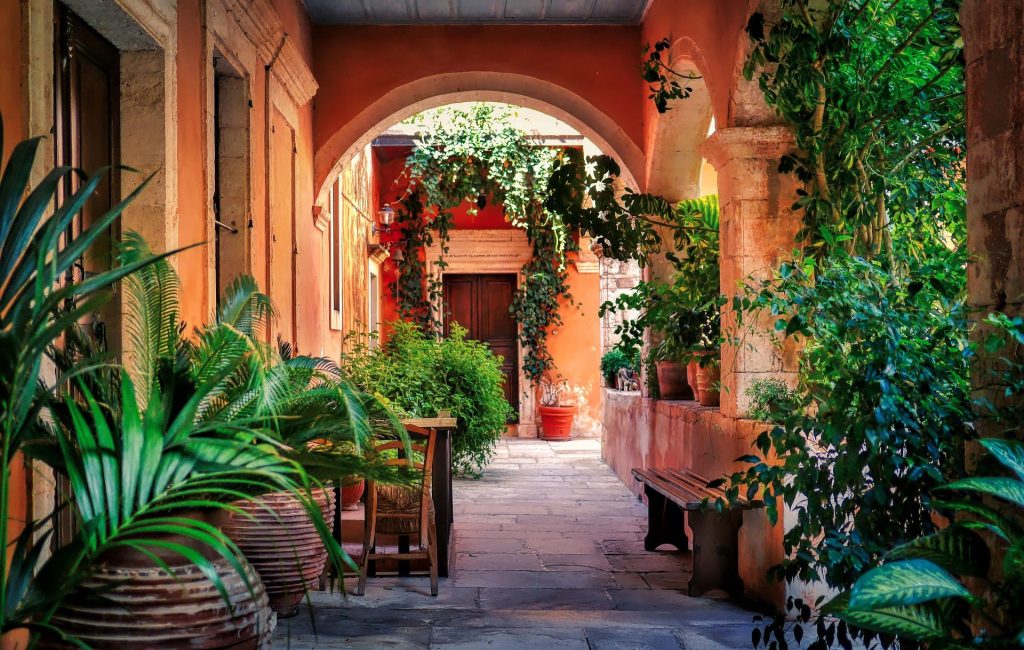BLOGS
Bringing the Colors of Spain: Designing with Vibrant Hues and Bold Patterns
“Spanish-style homes can really stand out from the crowd thanks to the wonderful elements that define this architectural movement.”
Have you become tired of the same color palette and you home interior design? We suggest that you incorporate the Spanish style interior design in your lovely home.
In classic Spanish style homes, natural materials like terra-cotta tiles, wooden beams, and wrought iron designs are often use. They often have warm, earthy colors, decorative touches like arches and columns, and beautiful furniture with detailed details and bright fabrics. Colors should be bright and bold because they can help make a place feel warm and inviting. Colors like red, orange, and yellow, as well as blues and greens, are often used.
With Spanish interior design, you can make a homey space that makes you feel comfortable and at ease.
Now, if you’re ready to create your Spanish-inspired homes keep on reading.

Mediterranean architecture and its history
Mediterranean houses as we know them today are based on an architectural style such as Mediterranean Revival. This style tries to make you feel like you’re in a luxurious Mediterranean house. It became famous in the 1920s, when a cultural fixation on money and leisure led to a boom in seaside resorts.
Homes designed in the Mediterranean Revival style are one of a kind because they combine design elements from a variety of regional cultures. The most prevalent ones are Italian and Spanish. Listed below is an analysis of the distinctions between the two:
Rebirth of Italian Culture, 1890-1930
Italian Renaissance architecture, as the name implies, is largely based on that of the 16th century Italy. Their towering stature and ornate touches like columns and arches are clear indicators of this. However, the style itself, which emerged at the end of the Victorian era, incorporates elements from earlier eras. Italian Renaissance architecture is the most opulent of the several Mediterranean architectural forms.
Rebirth of Spanish Culture, 1915-1930
Houses in the Spanish Revival style are modeled after those built by the Spanish colonists in the 16th century. This kind of building was quite popular in the sunshine states along the shore. Spanish Revival architecture tends to be less ornate than some of its Mediterranean counterparts. They have flatter roofs, making them look heavier, and cleaner overall.
Modern Spanish
Contemporary buildings in the Mediterranean style might use either the Spanish or Italian approach. It’s a return to an earlier emphasis on vacation-style accommodations. Mediterranean architecture is the inspiration for these residences, which combine classic design elements with contemporary conveniences. An emphasis on indoor-outdoor living is common in these homes’ open floor layouts, large, modern kitchens, and high ceilings.

Colors Of Spain In Focus: What makes a Spanish homes?
The following are some clear differences between the sub-types, but there are also a few things that all of them have in common:
Colors Of Spain & Exterior features
Faces that are big and perfect
- Stucco walls
- Low-pitched roofs made of tiles
- Arched doorways and windows
- Balconies and window grilles made of wrought iron
- Gardens or patios in the style of Europe
Colors Of Spain & Interior features
- One to two stories
- Plan with a rectangular shape
- Large windows
- Wood and decorative tile are used a lot.
- Designed to let breezes flow through the house
Did you know you can have a living space that is inspired of Spanish style homes? If you check Brittany’s Luxury Estate in Santa Rosa, you can see this great example of how new and old can work together in a mixed-use development.
The name of Pontevedra comes from a city in Spain. Like that city, Pontevedra gives the image of a sanctuary where everything is close by and each district has its own main courtyard that gives it its own personality.
Parks, tree-lined streets, fountains, and gardens, shops with coats of arms on their fronts, squares with lots of people, and sidewalk cafés with a lively vibe dot the interconnected streets, while the commercial district’s stone-and-glass buildings are dripping with potted greenery, making it feel more natural as you walk through the streets.
What are the colors of Spanish colonial interior design?
Rustic elegance is a hallmark of most Spanish-style dwellings. This is reflected in the terracotta aesthetic, which typically employs warm tones of orange, red, and deep brown. It’s a popular look because of how at ease and comfortable it makes visitors feel.
Achieving The Colors of Spain into Your Home
There are countless ways to incorporate some Spanish influence into your décor, whether you plan to fully embrace Spanish design throughout your house or just want to add a few pieces of the style to an existing design.

Revitalize the Interior’s Color Scheme
Use each wall as a blank canvas on which to unleash your imagination with color and pattern to create a soothing atmosphere in a home decorated in the Spanish style. Adding regionally inspired murals, artwork, or decorations like complex tiles or wrought iron pieces to white walls can make a room feel cozier and more intimate.
Homes in the Spanish style often include a color palette heavy on earthy tones like terracotta, burnt orange, and reddish brown. These are great for increasing a room’s coziness and making more daring color choices and decorative accents stand out.
Landscape in the style of the Mediterranean
Succulents are a great way to incorporate Spanish or Mediterranean landscaping elements into your home or garden. The pots and plants used for interior and exterior landscaping on a Spanish-style house are very different. A little bit of authentic Spanish design inside the house may rapidly perk up the atmosphere and unify the inside and exterior.
Large, brilliant blue glazed pots and terracotta containers stuffed with succulents and other low-maintenance plants are common tools. Private indoor gardens can be created in larger Spanish-style homes by combining wrought-iron wrapped boxed plants with regional olive and palm trees displayed in large urns.
A private courtyard with Spanish-style landscaping is a common feature of high-end residences, as is a room devoted entirely to an indoor landscaping project. In such cases, the ‘flooring’ is typically a natural material, such as one of the following:
- Saltillo Tiles
- Slump Block
- Cantera Stone
- Pebbles and the
- Patterned Brick
Try Things That Are Colonial-Inspired
Many people don’t know that what we call current Spanish style comes from the way Spanish style influenced American Colonial-style homes. Modern Spanish-style furniture could be thought of as a mix of the two ideas. This makes it a natural choice to use furniture and interior design elements that are based on Colonial styles.
In the modern Spanish style, many of the decorations come from the old Spanish things that people brought to the Americas, but they have been “refreshed” to feel more modern. Instead of the typical clay tile floors, the owners may opt for hardwood floors in the manner of the Colonial era. Often, these floor installations have warm or bright rugs with patterns that look like traditional Spanish decor.
Most of the furniture in Spanish style is made of wood or cast iron. If you want to give a nod to Colonial ideas, you could use heavy, big, dark wooden pieces that look like they will last for a long time. Heavy accent tables, tall headboards for beds, long dining tables, and chairs with high backs are all great adds.
The intricate carvings on the wood furniture that are typical of the Spanish Baroque style and go well with the home’s building bring the two styles together. Quatrefoil windows with heavy draperies, rich designs or fabric art on the walls, and sophisticated lighting are further hallmarks of the Colonial style.
Conclusion
Integrate elements of Spanish architecture and design into your home. Use the style’s colors, textures, and materials throughout your home to make it feel more inviting and distinctive. Make it your own by incorporating elements of your home’s design, and revel in the resulting depth.
Spanish-style homes can really stand out from the crowd thanks to the wonderful elements that define this architectural movement. The use of natural materials and artistic accents combined with warm hues creates an atmosphere reminiscent of a luxury villa.
Suggested Read: How To Design Your Home: Colors Of Old America
Suggested Read: Exquisite Craftsmanship Of Spanish Architecture
Suggested Read: Guide To Spanish-Themed House Design
Suggested Read: Colors Of A Rustic Spanish Style Home
Suggested Read: Best Features Of An American Home















